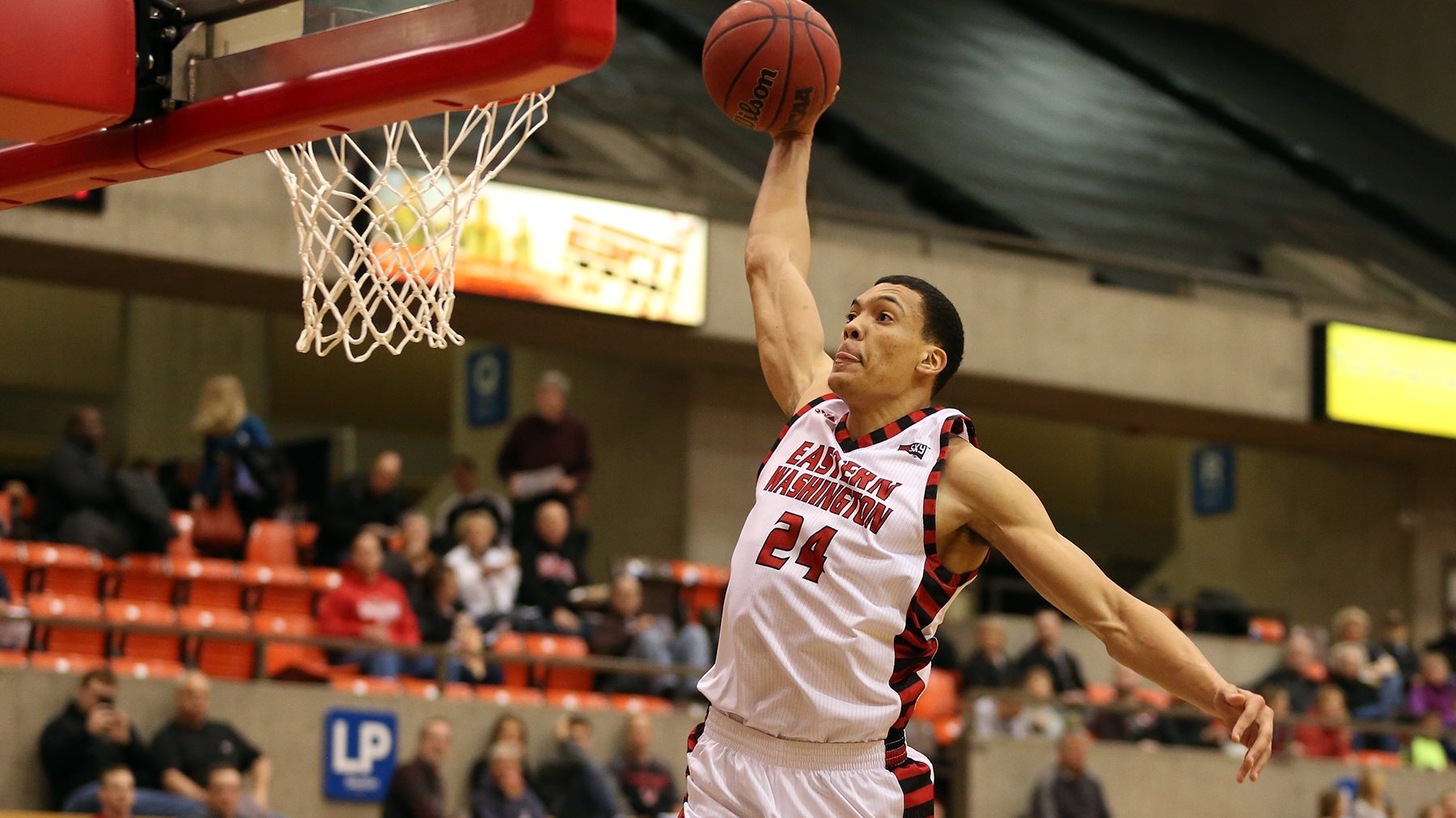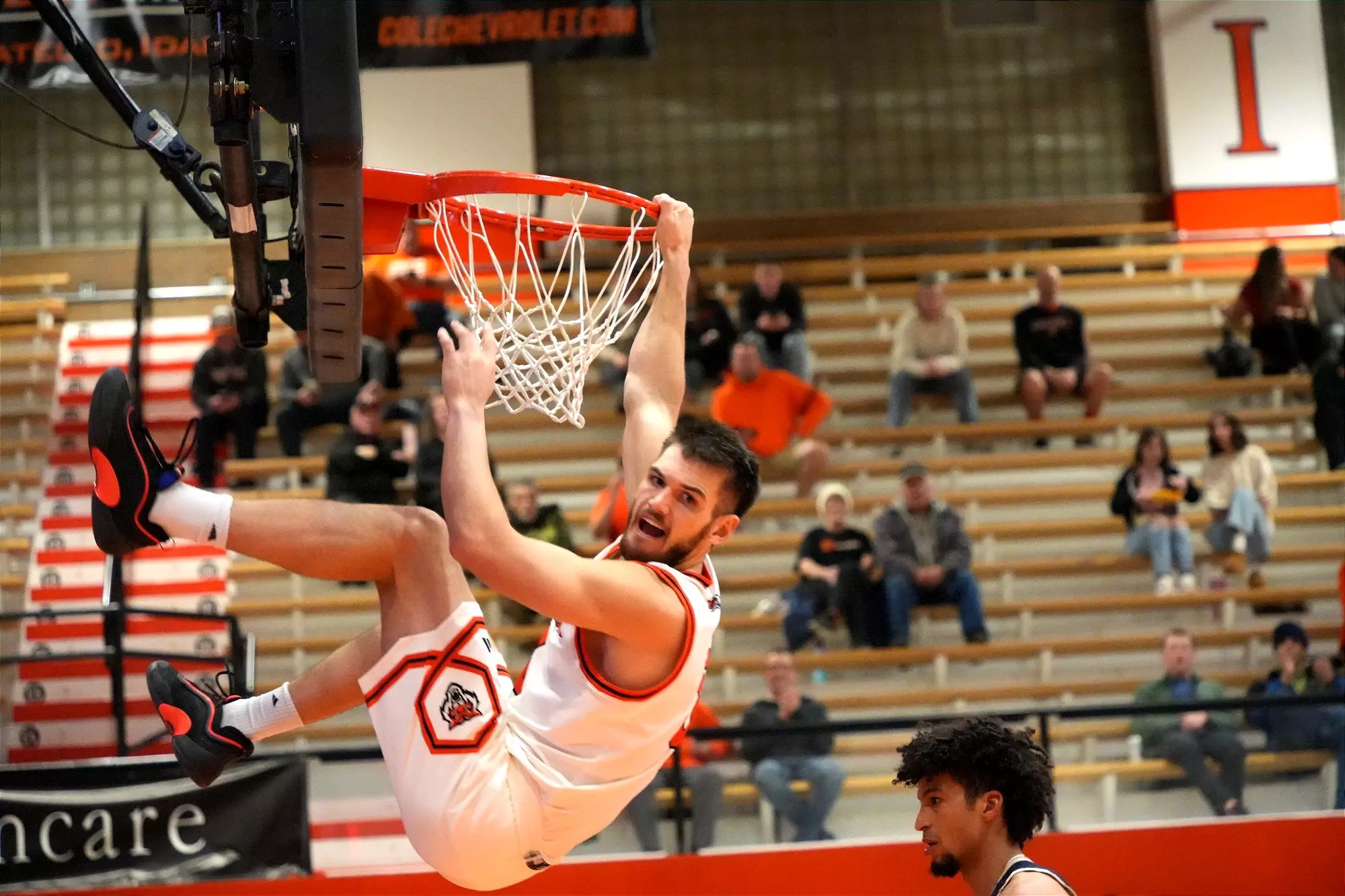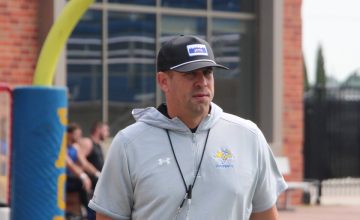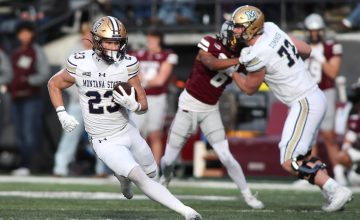BOISE, Idaho — The reorganization of rosters across men’s college basketball has been dizzying and, sometimes, depressing. Especially if you are a fan of the Big Sky Conference.
Two years ago, the league appeared set to return the league MVP in Eastern Washington guard Steele Venters, the Defensive Player of the Year in Darius Brown II of Montana State, the Newcomer of the Year in Isaac Jones of Idaho, The Top Reserve in Great Osobor and the Freshman of the Year in Nigel Burris.
Of the first and second-team All-Big Sky selections, only Angelo Allegri of Eastern Washington and Jubrile Belo of Montana State were seniors. Weber State’s Dillon Jones, Montana State’s Raequan Battle, Montana’s Josh Bannan, Northern Colorado’s Dalton Knecht, and Montana sharpshooter Aanen Moody all had the eligibility to come back and lead their teams.
Instead, every single one of those players other than Jones at Weber and Moody at Montana transferred to a “higher” level.
Any time headlining players leave, it will make….headlines. But one understated trend within the Big Sky Conference over the last two years has been the influx of quality transfers that joined the league not from Power 4 programs or Division I rosters but rather from Division II, Division III and the NAIA.
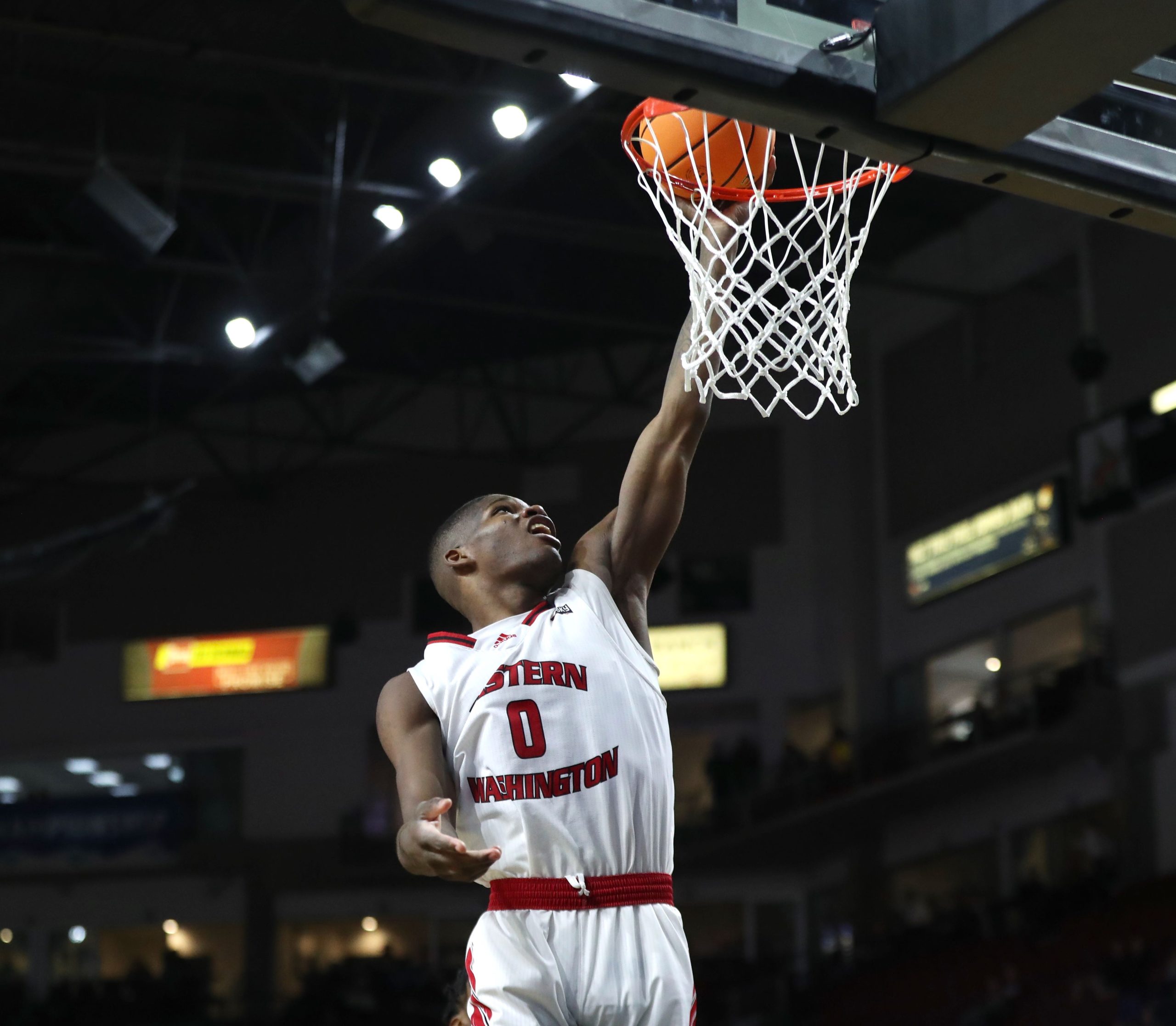
“There’s a lot of grey area when it comes to the top levels of Division II and the Division I level,” said Montana State head coach Matt Logie, who served as the head coach at Division III Whitworth from 2011 until 2019 and at Division II Point Loma from 2019 until 2023. “That can be said both the individual comparison from a player-to-player standpoint but also from a team standpoint. When we were at Point Loma, we had a chance to play Pepperdine in an exhibition game and we won by 30.
“There’s a lot more parity out there than the common fan understands. The labels that people get attached to them hold a little more weight than what the actualization of their abilities are. It’s not a surprise that the guys who have excelled at the Division II level are able to come to the Division I level and excel as well.”
Last off-season, most of the league’s best players — Weber’s Jones, Montana’s Moody, Montana State’s Robert Ford III, Idaho State’s Brayden Parker, Portland State’s KJ Allen — were seniors. But several other of the best decided to leave the league following all-league campaigns, including Northern Colorado’s Saint Thomas transferring to USC and UNC super sixth man Dejour Reaves transferring to Iona.
Eastern Washington head coach David Riley parlayed consecutive regular-season league titles into the head job at Washington State and he took a glut of his players with him, including unanimous first-team all-conference slasher Cedric Coward.
But Coward is a wrinkle in this transfer web. He began his career at Division III Willamette only to show out as one of the Big Sky’s most athletic and exciting players and get himself a spot at a Pac 12 school (before the Pac 12 dissolved).
“Normally, these guys have Division I athleticism and sometimes, that just comes a little bit late or sometimes, they were just unseen,” Logie said. “Or maybe they just improved. Everybody’s journey is a little different. And maybe what someone was as a basketball prospect as a 17-18 year old is completely different than what they are when they are 23. And that’s a credit to their hard work.”
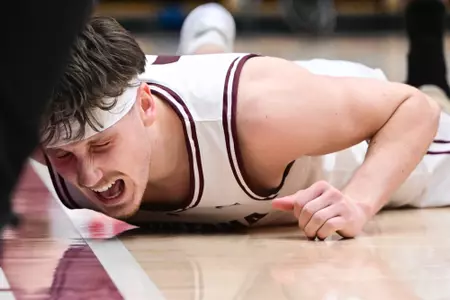
Because of previous successful transitions by “lower level” players like Coward and Brock McKenzie — a prolific scoring guard who played for Logie at Point Loma before averaging 14 points per game for in 2023 for Idaho State — the trend has picked up some steam. This year, several of the best players and several of the top newcomers in the conference came from either Division II or NAIA.
Montana, the co-Big Sky champion and a program that has thrived off landing some of the best “drop-down” type transfers (Martin Breunig, Ahmaad Rorie to name a few), has a roster filled with nine new faces. Kai Johnson, a high-scoring, charismatic transfer from Western Washington, is one of the most important additions the Grizzlies made this last off-season.
The Olympia, Washington native started 59 games at WWU and scored 1,133 points. As a junior, he averaged 21.6 points per game, which led the Great Northwest Athletic Conference and ranked 12th in Division II.
“We had seen him in scrimmages and from being around the region, and I thought his scoring would translate,” Montana 11th-year head coach Travis DeCuire said earlier this season. “Once he found out how to fit in our system, that’s been spot on.”
Johnson has scored in double figures 15 times this season, including in exactly half of Montana’s conference games. His signature moments each came against Montana State. He poured in 25 points in a 77-70 win in Missoula and filled it up to the tune of 23 points in an 89-85 win in Bozeman, each victory part of a 10-game UM winning streak.
“There’s teams that struggle to find ways to mesh with so much talent on the floor,” said Johnson, who averaged 11 points per game this campaign. “But we’ve always been trying to win. Recently, we’ve been locking in and taking care of that as the No. 1 priority.”

Portland State mastered the art of building competitive teams with transfers long before the concept of the transfer portal became a reality. The Vikings have often lived off both drop downs and junior college transfers.
This year’s Vikings team has plenty of talent that started at a higher level. Tre-Vaughan Minot, a hulking 6-foot-9, 250-pound transfer from South Carolina, won Big Sky Defensive Player of the Year. Jaylen Henderson, a transfer from Louisiana Tech, led the Vikings in scoring at 13.1 points per game. Isaiah Johnson, a former Oregon State transfer, is the energy guy for the most high-tempo team in the conference.
But it’s Quiant Myers, a silky-smooth transfer from Western Oregon, that is the catalyst for Portland State’s break-neck attack.
“You have to find the right fit, the right opportunity,” Portland State head coach Jase Coburn said. “We knew with Q coming into this, it was going to be a really good fit, a really good opportunity for him to have success here. It was exactly what we were looking for. And we’d played him in the past. So we knew his game was going to translate and that we were going to be able to get the most out of him.”
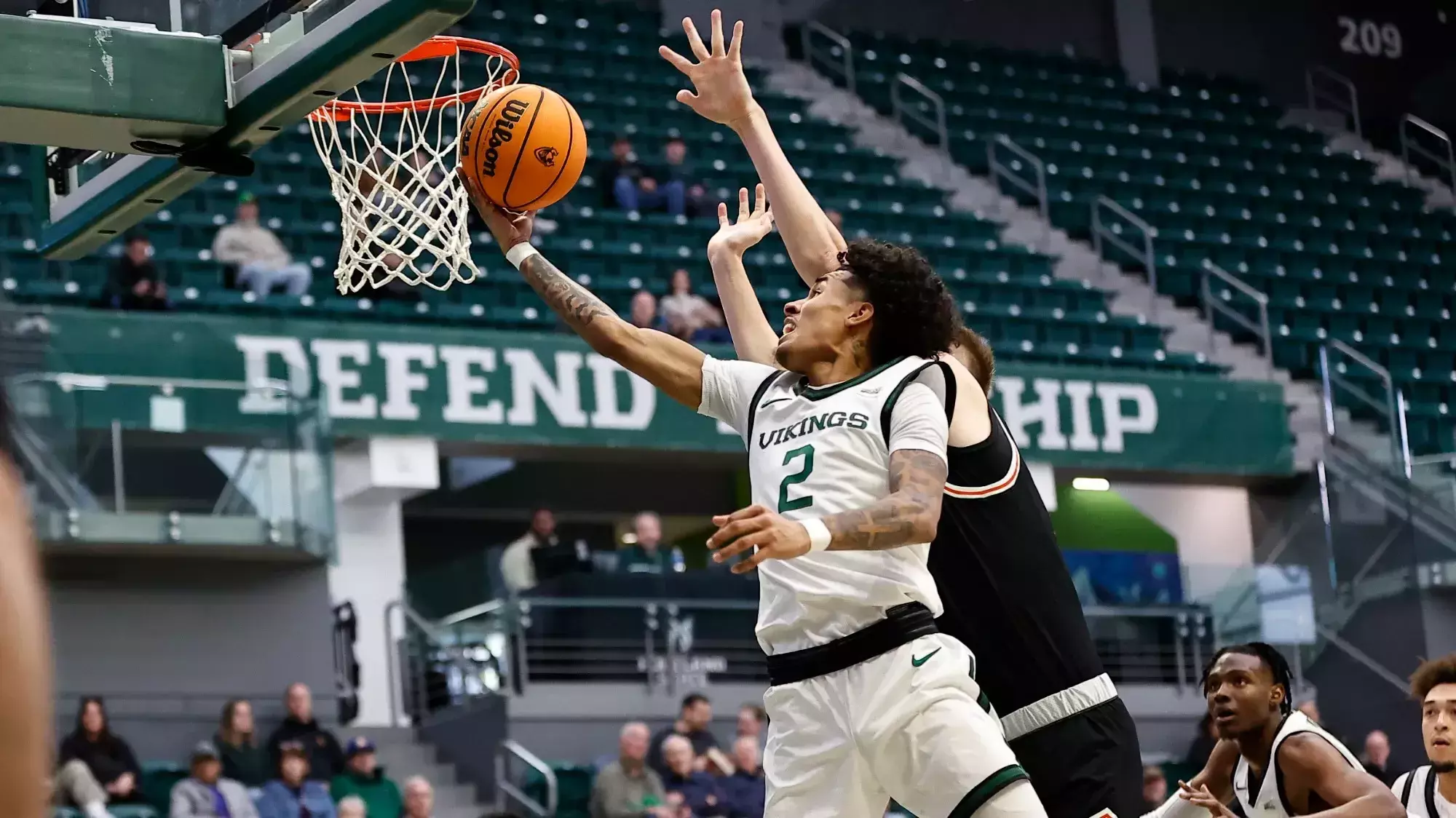
Myers, who is the son of ESPN Radio personality Q Myers of “Unecessary Roughness” fame, showed flashes, particularly during his junior year, of being able to be a next-level player. But he struggled with injuries at WOU, appearing in 61 games and starting 47 between 2021 and 2024.
His court vision, his 6-foot-5 frame and his efficient physical movements made him a seamless fit in Portland State’s system.
“Really, the skills are the same,” Myers said when asked about the D-1 level. “I played against a lot of great guys in the Division II. Coming to Portland State, that’s the same. It’s the physicality that’s different. Everybody is just so much bigger and stronger. But there’s a lot of competition in both of these leagues and there’s no easy games.”
Myers was among the national leaders in assists per game for much of the season and finished 17th in Division I with 6.1 dimes per game, which led the Big Sky. He also averaged 11 points per game and was a front-runner for Newcomer of the Year before the award went to Idaho State point guard Dylan Darling, a transfer from Washington State. Myers was an honorable mention all-conference selection.
“Q was going to find the opportunity to prove it, not that he was just a Division I player, but a really good Division I player,” Coburn said. “He just needed the opportunity and chance to show the world what he can do.”

Idaho State struck gold in the transfer portal with both Darling — a Washington State transfer who led the conference in scoring on his way to MVP along with Newcomer of the Year — as well as with Jake O’Neil, who has an argument for one of the most unorthodox transfer stories ever.
That distinction, at least in recent memory, probably goes to Jake Wiley. The astoundingly athletic forward started his career at Montana, washed out playing basketball before running track for the Griz. That didn’t work out either, so he transferred to Lewis & Clark State to revive his hoops career. After tearing it up in the Frontier Conference, he transferred to Eastern Washington and promptly averaged 21 points and 10 rebounds per game on his way to league MVP honors during his lone season in Cheney.
O’Neil can’t touch that production. But he certainly has at least AS crazy a story. During his high school career in Fruitland, Idaho, he was the Snake River Valley Player of the Year and led his team to a state basketball title. He was also one of the best golfers in the state of Idaho, leading Fruitland to the 3A state championship with a 69.8 per round stroke average as a senior.
He decided to play golf in college, committing to Boise State. After a redshirt year during the pandemic-impeded 2019-2020 academic year, he transferred to the College of Idaho. He spent his first year playing golf, then decided to return to basketball.
His first year back on the hardwood, he averaged 10.7 points and 8.1 rebounds per game in 16 games of action for the nationally-elite Yotes. Those numbers remained consistent, as he averaged 10.1 points and 8.1 rebounds for the 2023 NAIA national champions.
“As long as you find the right fit,” said Northern Colorado head coach Steve Smiley. “Saint Thomas is the leading minute guy at USC this year. If you are a great player on a national championship team, you are a good player, doesn’t matter if it’s NAIA. You prove you are a good player in our league in the Big Sky, you are probably going to be a pro. And if you want to play at a higher level, you can.”
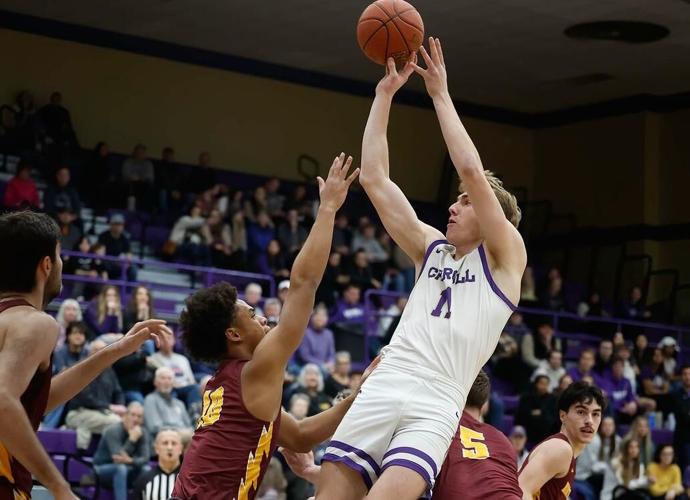
When it comes to the notion, “If you can hoop, you can hoop”, Andrew Cook at Eastern Washington might be the best example. During his senior prep year at Servite High in Anaheim, he averaged 21 points per game and was a first-team All-Trinity League selection in one of the most prestigious basketball conferences in the region. Yet he got little to no recruitment.
The 6-foot-4 shooting guard from Huntington Beach made the Frontier Conference Player of the Week honor a standby during his time at Carroll College. He averaged nearly 20 points per game the two seasons prior to this one on the way to back-to-back NAIA All-American nods.
When former Carroll head coach Ryan Lundgren took the associate head coaching job at EWU on Dan Monson’s staff when Monson took over for Riley (see how this works?), Cook followed Lundgren to EWU.
This season, Cook averaged 16 points per game (7th in the Big Sky) despite hitting just nine 3-pointers. He shot 55.1 percent from the floor, an absurd mark for a shooting guard. And like all the other aforementioned, none of it surprised him.
“I would just say it’s just a much faster-paced game and just much better athletes. It’s not as large of a jump as some might think, not that it’s not a jump, but not as wide of a gap as I think some people think,” Cook told Jack Marshall of SWX Montana Television in Helena.
